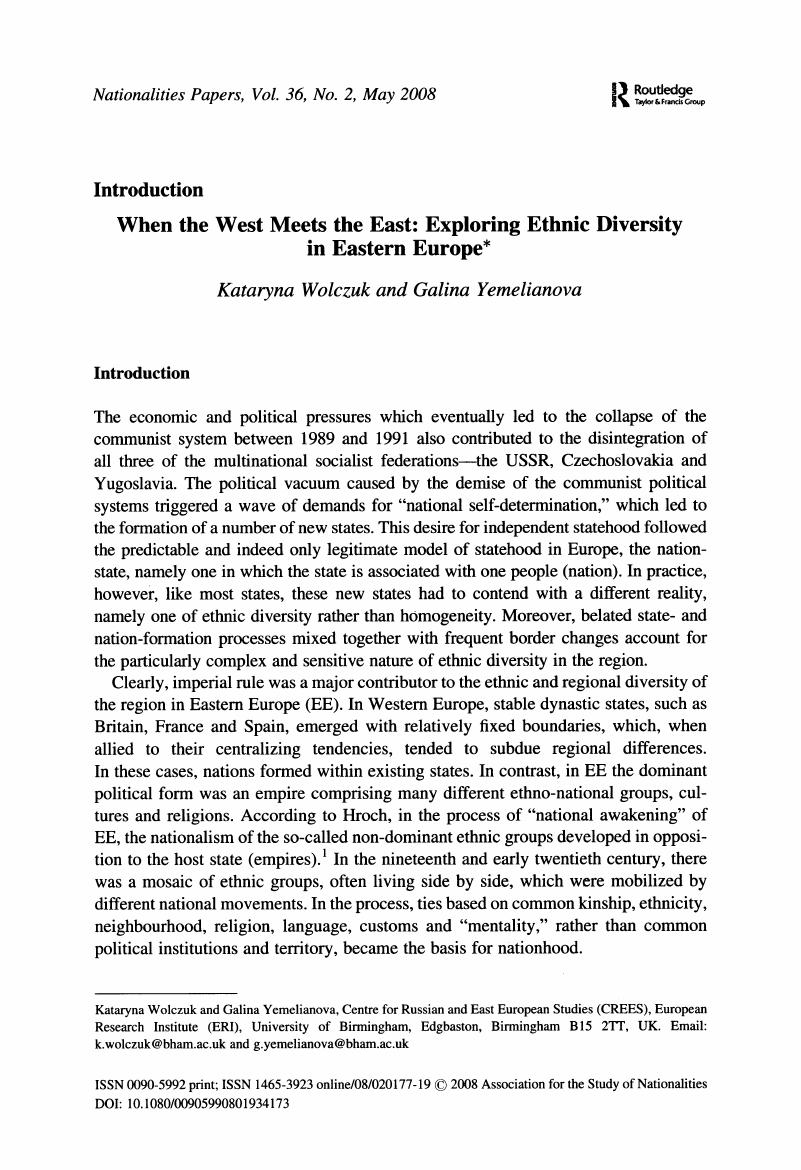Crossref Citations
This article has been cited by the following publications. This list is generated based on data provided by Crossref.
Ziemer, Ulrike
2010.
Belonging and Longing: Armenian Youth and Diasporic Long‐Distance Nationalism in Contemporary Russia.
Studies in Ethnicity and Nationalism,
Vol. 10,
Issue. 2,
p.
290.
Ziemer, Ulrike
2010.
Tackling tensions and ambivalences: Armenian girls’ diasporic identities in Russia.
Nationalities Papers,
Vol. 38,
Issue. 5,
p.
689.
Bandelj, Nina
and
Finley, Katelyn
2015.
The Wiley Blackwell Encyclopedia of Race, Ethnicity, and Nationalism.
p.
1.
Waltzer, Lucie
2015.
Identity and Migration in Europe: Multidisciplinary Perspectives.
Vol. 13,
Issue. ,
p.
209.
Gorodzeisky, Anastasia
and
Leykin, Inna
2022.
On the West–East methodological bias in measuring international migration.
Journal of Ethnic and Migration Studies,
Vol. 48,
Issue. 13,
p.
3160.
Rutland, Peter
2022.
Racism and Nationalism.
Nationalities Papers,
Vol. 50,
Issue. 4,
p.
629.
Gorodzeisky, Anastasia
2023.
Public Opinion toward Asylum Seekers in Post-Communist Europe: A Comparative Perspective.
Problems of Post-Communism,
Vol. 70,
Issue. 6,
p.
654.





